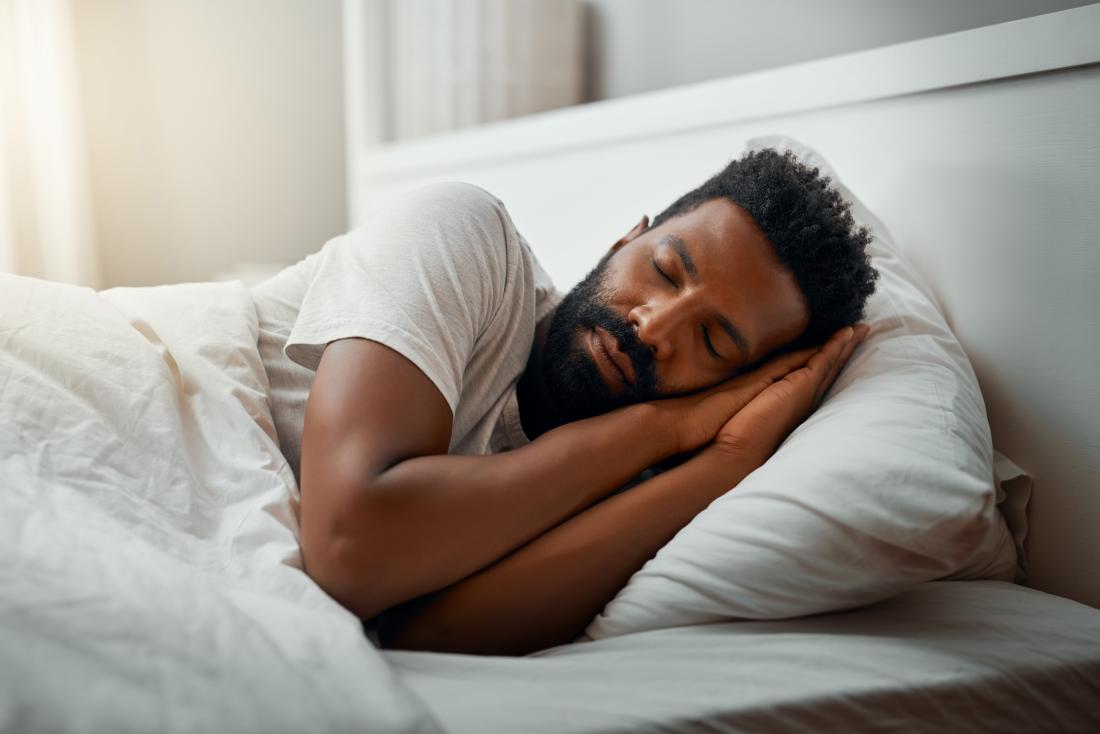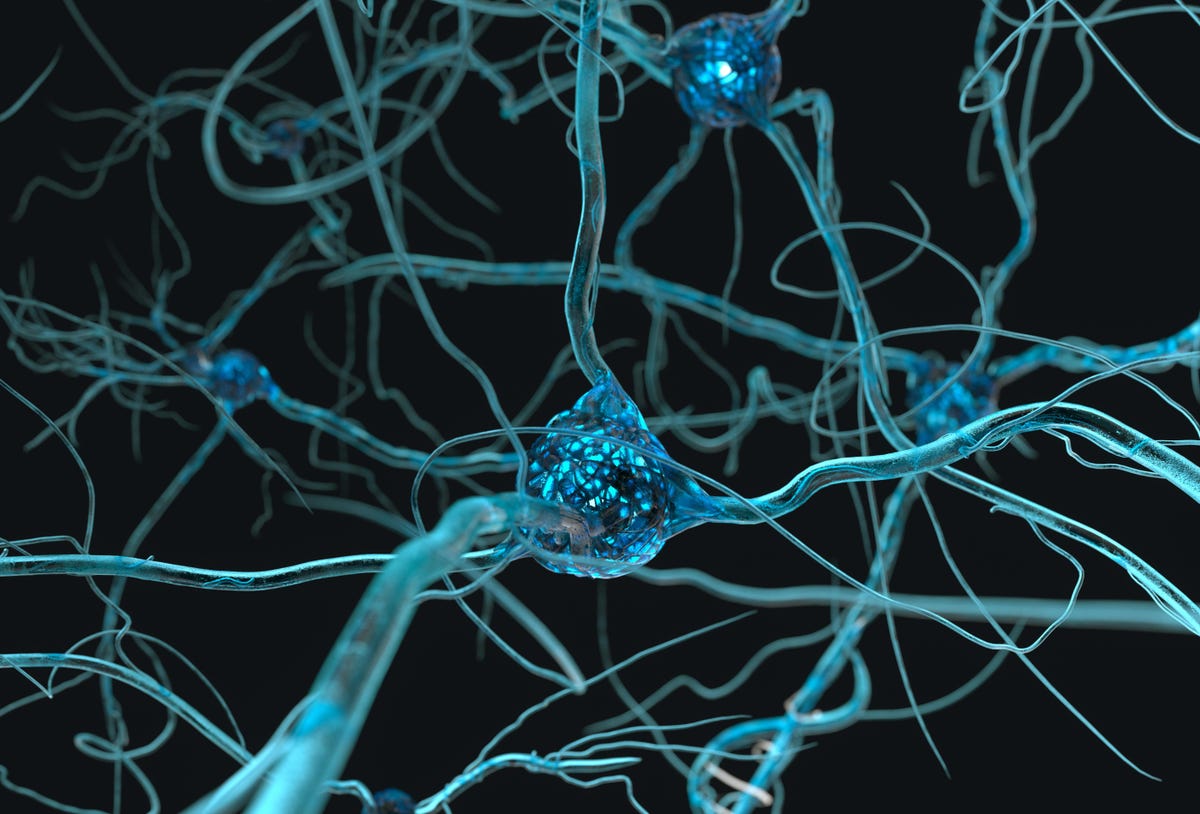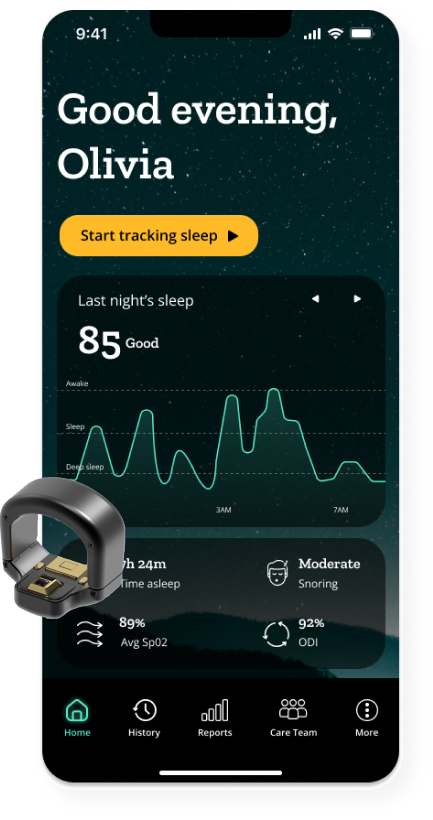What is Sleep: Understanding the Science of Sleep
We always compare our brains to computers. But when a laptop battery gets low, you just plug it back in to recharge while the device stays up and running. With a power cord handy, your laptop, tablet, or phone can stay on and perform tasks almost indefinitely.
Many of us feel like there aren’t enough hours in a day and wish we could just keep running like an efficient machine. But unfortunately, people aren’t quite like computers in this way. To keep going, we need to sleep.
Sleep is as vital as food, water, and air to our survival and functioning. It’s so important, we spend a quarter to a third of our lifetime asleep.
Yet, sleep remains one of the most mysterious of all physical human needs. In sleep, our brains never truly ‘shut off.’ They switch into different modes, cycling between REM (rapid eye movement) and NREM (non-rapid eye movement) sleep stages.
States of REM help us process information and reset our bodies and minds in preparation for the day ahead. How are we doing all that important work when it seems like we did nothing at all?
Based on Episode 1 of the Matt Walker Podcast, we are prepared to answer the question, ‘what is sleep?’ We’ll explore the brain’s role in sleep, different types of sleep, sleep cycles, why we need it, how much we need, and how to make sure you’re sleeping enough.
What is Sleep?
It makes sense why the nature of sleep has always been so fascinating and elusive. Our minds conjure up vivid dreams as we seem to create energy out of thin air, yet we think of sleep as a state of inactivity.
In fact, until the 1950s, people believed sleep was a passive state in which the body and brain were dormant. But now we know more about the life-sustaining assortment of activities the brain does while you’re asleep.
When we fall asleep, our mental and physical activity drops and our consciousness transforms. We partially tune out the stimuli in our environment by dialing down our senses. But inside, there’s a lot going on.
For an automatic process, sleep is astoundingly complex. The brain methodically cycles through distinct phases to maintain our physical and mental health. While we now understand a lot more about what sleep is and why we need it, scientists are still learning about sleep’s diverse purposes and mechanisms daily.

Why We Need Sleep
Our mood, memory, cognition, and endocrine balance depend on the restoration that takes place during sleep because while we sleep, our bodies enter an anabolic (molecule-building) state.
Anabolism uses energy to construct molecules, then grows and differentiates cells that make up tissues and organs. Through this process, sleep helps revitalize the skeletal, muscular, immune, and nervous systems, including the brain.
Because it facilitates this anabolic activity keeping us alive, sleep plays a role in all these fundamental components of life:
- Growth and repair– When children and young adults engage in deep sleep, the body releases growth hormones which promote growth and development. The resulting increased protein production is necessary for cell growth and damage repair at all stages of life.
- Nervous system– Sleep supports the nervous system, including the brain and nerve cells. As nerve cells repair to keep functioning, nerve connections activate to strengthen the brain and cognitive functioning. This explains why severe sleep deprivation leads to neurological problems like mood swings, deficits in memory, thinking, and performance, and sometimes even leads to hallucinations.
- Survival and well-being– Inadequate sleep compromises the immune system and strains the most important systems throughout the entire body, increasing the risk of obesity, diabetes, heart problems, and other health conditions. This explains why a prolonged lack of REM sleep may shorten a person’s lifespan.
Considering that at least 40 million Americans per year experience sleep disorders, lack of sleep has prevalent and wide-reaching health ramifications.
Sleep and the Brain
So, what on earth is going on in the brain while sleep re-fuels the mind and body? It’s still not fully understood, but here’s what we know so far:
- Hypothalamus– This peanut-sized structure is located deep in the brain, right below the thalamus, towards the front. The hypothalamus is home to nerve cell groups responsible for sleep and arousal. One of these nerve cell groups within the hypothalamus is the suprachiasmatic nucleus (SCN). The SCN is made of clusters of thousands of cells that interpret light exposure information from the eyes into behavioral rhythms. That’s why light and darkness in the environment influence the circadian rhythm, which drives the daily transitions between wakefulness and sleepiness.
- Pineal gland– Beneath and to the rear of the thalamus, the pineal gland is nestled between the left and right brain hemispheres. It takes in SCN signals to produce the sleep-promoting hormone melatonin. Dips and spikes in melatonin are believed to help synchronize the circadian rhythm with light and dark cycles of day and night.
- Brain stem– From the very base of the brain, the brain stem helps the hypothalamus control those wake and sleep transitions. Cells in the brain stem and hypothalamus produce the neurotransmitter GABA. GABA then calms down activity in the hypothalamus and brain stem arousal center. During REM sleep, signals from the brain stem relax the muscles that control limb movements, so we don’t act out dreams by moving our limbs.
- Thalamus– Near the center of the brain, above the hypothalamus, is the thalamus. This brain region passes sensory information into the cerebral cortex, the outer layer of the brain that converts short-term memory information into long-term memory. The thalamus settles down during most sleep stages so we can tune out our surroundings. Then, the thalamus becomes active again during REM, delivering images, sounds, and other sensations to the cortex. That’s how we dream.
- Basal forebrain– There’s another region near the front of the brain towards the base called the basal forebrain. Cells in the basal forebrain release adenosine, a by-product of cells using up energy. Adenosine accumulation is responsible for sleep pressure, sleepiness that intensifies the longer we’re awake.
- Amygdala– The almond-shaped structure beneath the hypothalamus and SCN helps process emotions. The amygdala’s activity increases during REM sleep, likely the source of the strong emotional content of many dreams.
Circadian Rhythm
Your circadian rhythms follow your biological clock, based approximately on the 24 hours in a day. Aside from sleep, circadian rhythm times other functions like body temperature, metabolism, and hormone release. Above, we touched on the relationships between the hypothalamus and SCN, the pineal gland, melatonin, circadian rhythm, and sleep.
The eyes sense variations in light and darkness throughout the day. Then, the SCN within the hypothalamus translates the light exposure information into your behavioral rhythms. Through this line of communication, the pineal gland increases melatonin when it’s dark outside and decreases melatonin when it’s bright and likely time to be active.
That’s essentially how your brain synchronizes your circadian rhythm with your environment. As a result, light cues you to wake up and be active when the sun is up (your eyes perceive light even when they’re closed). Then, as the sun goes down, darkness cues you to sleep.
Even if environmental cues cease or change, your circadian rhythm can still operate on the same routine.
For instance, when you fly to a different time zone, you’re still automatically scheduled to wake and sleep according to the original time zone programmed into your biological clock. That’s why we experience jet lag, struggling to readjust our circadian rhythm to the timing of day and night in a new place.
Additionally, many people who work night shifts have difficulty falling asleep during the day and staying awake while working at night, even when they got an ample amount of sleep. This is because our circadian rhythms are so dependent on the amount of light during the day and night, it’s a biological response that is difficult to alter. Light exposure makes it hard to fall and stay asleep, and darkness can make it hard to stay awake.

Two Main Types of Sleep
Let’s gain a broader understanding of the two main types of sleep, REM and non-REM sleep.
Non-REM sleep, or NREM, is comprised of three stages. Stage one is the lightest sleep level, and stage three is the deepest. Deep NREM sleep facilitates brain plasticity, learning, memory, and physical repair so we feel rested in the morning.
REM is the fourth sleep stage, following deep sleep. Though we dream in almost all stages of sleep, REM is the main dream stage, as the brain is more active. REM is where we have dreams that can be emotional, narrative, memorable, lifelike, and even hallucinogenic. This stage regulates moods and emotions.
Next, we’ll delve deeper into the unique characteristics of REM and NREM.
Overview
| Factor | NREM Sleep | REM Sleep |
| Definition | Non-rapid eye movement sleep, characterized by slow brain waves | Rapid eye movement sleep, characterized by brain activity |
| Stages | Divided into three stages that increase in depth of sleep | One stage |
| Dreaming | Dreams can occur, but they are less vivid and memorable | The principal stage for dreaming |
| Eye Movement | Minimal eye movement | Horizontal, shuttling eye movements |
| Brain Activity | Bursts of deep brain waves flow over the cortex | More brain activity compared to NREM sleep |
| Sleep Spindles | Short, synchronous bursts of electrical brain wave activity | Not present during REM sleep |
| Cycling Architecture | Alternates with REM sleep every 90 minutes | Alternates with NREM sleep every 90 minutes |
| Duration and Ratio | Longer duration (75-80%) and more prevalent during the first half of the night | Shorter in duration and is more prevalent during the second half of the night |
| Importance for Functioning | Important for physical restoration and growth, brain plasticity, and memory consolidation | Important for mood regulation and emotional processing |
Non-Rapid Eye Movement (NREM) Sleep
NREM sleep accounts for 75-80% of your time asleep. This is when your body builds up muscle and bone, repairs and regenerates tissues, and strengthens the immune system.
Every time you enter NREM during a sleep cycle, you go through three progressive NREM stages:
- Stage One: 5-10 minutes. When you first fall asleep, you get the initial, very light sleep stage. Your muscles are just beginning to relax as your breathing and heart rate slow. In stage one, you may occasionally have the sensation of falling, followed by a sudden muscle contraction called a hypnic jerk.
- Stage Two: typically the longest stage. While further relaxing, slowing down, and decreasing its temperature, your body prepares to sleep more deeply.
- Stage Three: This stage starts off longer and gets shorter throughout the night. Your muscles are fully relaxed while your breathing, blood pressure, and heart rate reach their lowest levels. It may be hard to wake up during stage three. Meanwhile, the brain transfers any recent learning into your long-term memory. This is the deep sleep primarily responsible for making you feel refreshed and rested in the morning.
In deep NREM sleep, large, deep brain waves sweep over the cortex from the front to the back of the brain.
At the peak of these deep brain waves, there are short, one- to one-and-a-half-second bursts of electrical brain wave activity called sleep spindles. Sleep spindles may be most prevalent in stage two.
Rapid Eye Movement (REM) Sleep
After the first 90 minutes of NREM, you have your first round of stage four or REM sleep. The first REM period is the shortest, lasting about 10 minutes before you start over, back at stage one. With each sleep cycle, you spend more time in REM, and the last REM period of the night may last up to an hour.
Your brain activity, blood pressure, heart rate, and breathing rate increase, reaching similar levels to when you’re awake. Your eyes do strange, quick, side-to-side movements under your eyelids.
Your body goes into temporary paralysis, probably to stop you from moving while you dream. Researchers believe REM is crucial for emotional processing, mood regulation, and memory.
Understanding the Sleep Cycle
During sleep, the brain switches back and forth between NREM and REM in cycles that restart about every 90 minutes, repeating four to five times in the night. When we first fall asleep, NREM sleep dominates the 90-minute cycles, with little REM happening.
Gradually, the NREM/REM balance changes. Roughly halfway through the night, REM slowly takes over the 90-minute cycles more and more as NREM drops off. That means abrupt changes in sleep schedule can have a surprisingly drastic impact.
For example, say you have a consistent sleep schedule but suddenly wake up two hours early one morning. You got six hours of sleep instead of the usual eight. You only missed out on 25% of total sleep time.
But most of your REM occurs during the second half of the night, especially the last few hours. So waking up two hours early can mean you sacrificed 60-70% of your REM sleep. Though you need all the sleep stages equally, this lack of REM sleep may substantially affect your mood and functioning the following day.
How Much Sleep Do You Actually Need?
Most adults need seven to eight hours of sleep each night with minimal interruptions. But, everyone is different. A small number of people are fine sleeping six hours or less without feeling sleep deprived. Others may feel their best after sleeping up to 10 hours a night.
The optimal amount of sleep also evolves over our lifetime. At first, babies sleep 16-18 hours per day to keep up with their rapid rate of growth and development, especially in the brain. On average, children and teens should get around nine and a half hours of sleep.
Seven to nine hours is a healthy range for most adults, but those over the age of 60 may need more sleep. This is because, as we age, our sleep gets shorter and lighter with more frequent interruptions.
Sleep can differ based on sex, too. Sleep studies have shown that men wake up for up to 2% of their nightly sleep time, but women only wake up for up to 1% of their sleep time.
How to Get Enough Sleep
Now you know adequate sleep is imperative to maintain your body and mind. So, make it your goal to sleep seven to nine hours, or at least enough to feel energized.
Undersleeping by just an hour or two can throw you off. Even worse, if you make a habit of losing sleep several days during the week, sleep deprivation piles up day after day. Your energy levels and mental and emotional functioning can suffer.
If you allow sleep deprivation to pile high, it’s not always possible to fully ‘catch up’ on sleep on your days off. Making up for lost hours of sleep later may help your energy bounce back, but your neurocognitive performance might continue to lag behind.
On the other hand, if you don’t get enough sleep on a given night, it will probably pay off to take a nap in the afternoon. Research suggests napping may have considerable benefits.
Sleeping six and a half hours at night and 90 minutes in the afternoon can make us feel less tired in general. As long as the hour-and-a-half nap is no later than 2 pm, the 6.5 hours/1.5 hours split might even improve long-term memory and cognitive performance.
Tracking Your Sleep
A clinical sleep study was once the only way to investigate your sleep in great detail. Now, we have countless easy ways to proactively track and manage our sleep on our own. Especially combined with wearable devices, smartphone apps can analyze biological markers and other sleep data.
In addition to recording the number of hours you slept, digital sleep tracking tools observe sounds, movements, heart rate, and breathing rates while you sleep. That way, you can find out if you’re sleeping long enough, cycling through NREM and REM normally, or experiencing sleep disturbances you can’t recall once awake.
Equipped with this information, we encourage you to adjust your lifestyle, schedule, or sleep environment to accommodate the peaceful and renewing sleep you desperately need to stay healthy and perform to your full potential.


Are you getting Plenty of Restful Sleep?
Even though sleep is a mysterious thing, we know it’s fundamental to our survival and quality of life. Interacting brain regions meticulously orchestrate powerful forces of NREM and REM sleep, regulating our bodies, emotions, thinking, and memories.
Sleep keeps our metabolic, endocrine, immune, and nervous systems healthy, preventing diabetes, obesity, heart problems, and more. Sleep builds and repairs muscles, bones, tissues, and even nerve and brain cells.
So what are you doing to secure the physical and mental vitality from sleeping well? Are you getting your full eight hours? Do you keep a comfortable, quiet, dark sleeping environment? Do you follow a regular, soothing bedtime routine?
It’s smart to track the quantity and quality of your sleep and establish healthy habits. Think about using a personalized, clinician-led digital platform to support your sleep and well-being.
FAQs About Sleep
How is being unconscious different from sleeping?
Since sleeping is the mind and body’s natural way of refreshing themselves, you wake up naturally or awake from movement, light, or sound. But when you’re unconscious from anesthesia or due to brain injury/shock, you don’t have the brain activity present during sleep. So you don’t respond to sensory stimuli by waking up.
What is the minimum amount of sleep you need to stay healthy?
On average, adults need at least seven hours of sleep per night to stay healthy.
What is the difference between death & sleep?
The mind and body continue functioning when you sleep. Death causes the mind and body to stop functioning permanently.
What is the maximum time that a human being can sleep?
The maximum recommendation for adults is nine hours of sleep, but some people may prefer to sleep 10 hours. In some circumstances, like being very sick, people have been known to sleep for a whole day or longer.

